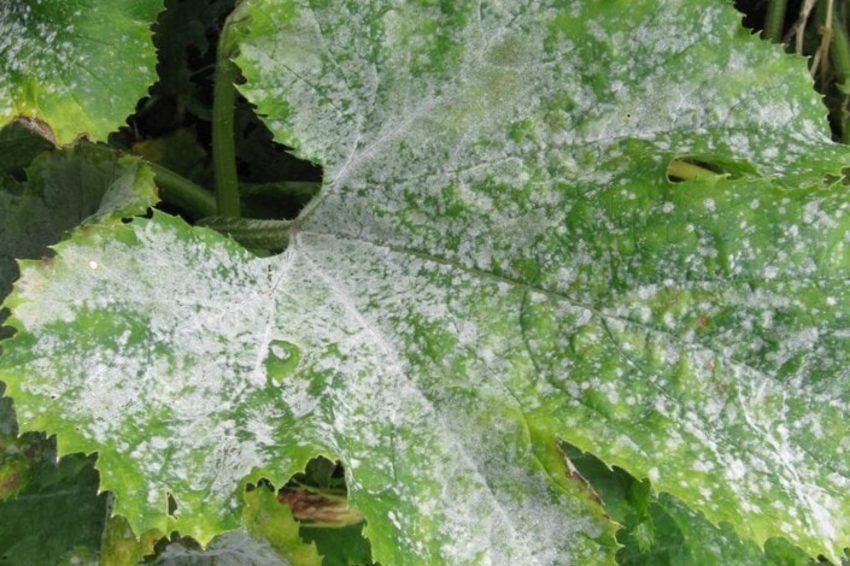Share this post
The summer brings with it the chance for all your plants and bushes to truly blossom and shine. But, as any grower will tell you, it takes a whole lot more than a little bit of water and sunlight to cultivate healthy plant life.
One thing we and every other gardener in the world have had to deal with is powdery mildew spores. Like the common flu or cold, it’s the kind of plant sickness that spreads easily, and no type of plant is safe.
Neem oil has long been touted as the antidote to this fungal disease. It’s probably the most popular natural fungicide in the world, and supposedly works wonders – or does it?
Indeed, as you may have gleaned from reading the title of this post, using neem oil to treat or prevent powdery mildew comes with no shortage of risks.
What is Neem Oil?
It’s an extract derived from the seeds of the neem tree, commonly found in India, and is revered for its natural insecticidal and fungicidal properties. Naturally, these traits have led to its adoption as a form of fungal control, used not only to treat powdery mildew, but prevent powdery mildew as well. Speaking of…
What You Need to Know about Powdery Mildew
Powdery mildew gets its name from its appearance: it’s a white or gray powdery coating that normally appears on the leaf surface, but can sometimes be found on the stem, flowers, and fruits as well.
The presence of powdery mildew is caused by various fungi, and it thrives in dry climates, particularly during spring and summer. Cool, breezy nights also encourage its growth.
Unfortunately, many different plants are susceptible to powdery mildew. These include everything from ornamentals, like roses, to vegetables like beans and cucumbers.
But, powdery mildew is often specific to certain families, so it may not spread from an ornamental to a woody plant, for example. The bad news is that within that family of plants, the spread is often rapid.
How Neem Oil Is Used to Treat and Prevent Powdery Mildew
When applied to the mildew growth on infected plants, neem oil’s primary function is to target the spores and inhibit their growth, and is therefore often thought of as the best form of powdery mildew treatment and disease control.
The typical application process for neem oil involves repeated weekly or bi-weekly efforts. The neem oil is mixed with water, while the leaf surface is coated with baking soda or liquid soap to improve coverage of the oil. The neem oil is then applied with a spray bottle and evenly distributed across the infected or susceptible plants, every 7 to 14 days.
The Risks of Neem Oil on Powdery Mildew
Many gardeners and cultivators will sing neem oil’s praises, often unaware of the potential ramifications on plant life that come with its use. Fortunately, we’re here to spread the word and make you aware of what neem oil can do.
- Negative Environmental Impact: Despite being a natural product in and of itself, the use of neem oil can be detrimental to the environment due to soil contamination, water pollution, and a loss of biodiversity.
- Health Risks: Though organically sourced, neem oil carries some potential health risks with it, including possible allergic reactions, the disruption of hormones, and general overexposure risks to those who work directly with it.
- Pest Immunity: Though neem oil does work to control powdery mildew, certain strains and pests may be immune to its effects, or at the very least may require precise treatment, which many individuals may not be able to perform.
- Unpleasant Odor: Though growers will no doubt be used to some foul smells, neem oil has a particularly unpleasant odor that evokes burning tires or pungent garlic.
- Harmful Waste Materials: The neem oil extraction process is an involved one that can leave behind harmful waste materials such as hexane or other petroleum-based solvents used in the extraction process. This waste can damage local ecosystems and the life contained within.
- Deforestation: Neem oil is extracted from the neem tree, a particularly fast-growing tree native to India. Because they are so fast-growing, manufacturers will often ravage large swaths of land to establish a plantation, eradicating local ecosystems in the process.
- Photosynthesis: Arguably the most damning of neem oil’s consequences is its effects on photosynthesis, the crucial process by which plants live. The neem oil can block the stomata on your plants, thus preventing them from sustaining themselves and killing them in the process.
Eco-Friendly Fungicide Alternative to Neem Oil: Protection Plus by EPM
Now that we’ve established what makes neem oil so potentially harmful, let’s talk about some alternatives, specifically EPM’s Protection Plus.
Protection Plus is a natural, oil-free, and non-systemic citric acid insecticide and fungicide. It is a contact killer and, for diseases like powdery mildew, you’ll usually be seeing positive results within 24 hours of application.
Benefits of Protection Plus to Manage Powdery Mildew
The main benefits of Protection Plus are as follows:
- Lower Total Cost: As a concentrate, Protection Plus can be added to water, with a single quart equal to 1,000 ounces of solution in terms of efficacy.
- Contact Killer: Some insects, pests, and fungi can build up an immunity to neem oil. Protection Plus’ mode of action reduces this resistance risk.
- No Residue: Due to its oil-free nature, Protection Plus doesn’t leave behind any harmful residue, keeping your plants healthy.
Choose Protection Plus Today
Though neem oil has been a reliable option for years, Protection Plus offers an approach that steps around a lot of the downsides that neem oil users face. Using Protection Plus will save you money while still being very efficient. It’s a contact killer and will eliminate pests and fungi within 24 hours of contact.
If you’re wondering about how our products at EPM can help your crops, feel free to get in touch with us.
Featured image credit: https://www.rhs.org.uk/disease/powdery-mildews

